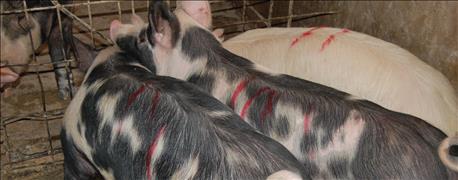August 26, 2016

Pork producers care a lot about the number of hogs coming to market compared to the number of hogs that packers can handle. Producers generally benefit when there is more packer capacity than available hogs. In that situation, more buyers are available than hogs, and competition forces packers to bid more strongly for the limited hog supply. This tends to result in narrow margins for packers.
The opposite situation occurs when there are more hogs coming to market than packers have the capacity to handle. There was an extreme imbalance in the fall of 1998, when hog prices collapsed to as low as $8 per live cwt. There were many more hogs coming to market than packers could handle.

PACKER CAPACITY: Whether or not there is enough packer capacity for hogs coming to market in the next few months is a question mark.
Steve Meyer closely tracks hog processing capacity for the industry. Meyer is vice president of Express Markets Inc. in Fort Wayne, Ind. He suggested recently that in the fall of 2015, there were weeks when the number of hogs coming to market pushed up against packer capacity. By his count, hog numbers will be 2% to 3% higher this fall, with only a modest increase in packer capacity.
Supply and demand
If too many hogs relative to capacity are bad for producers, it’s generally favorable for packer margins. That appears to be the case now.
The chart below shows the farm-to-wholesale margin in cents per retail pound as reported by USDA. You could also think of this as the packer margin. During the past five years, this margin averaged about 55 cents per pound in October through December.
However, in the fall of 2015, the margin was 69 cents per pound. So far in 2016, the margin has been running even higher than in 2015. These high gross margins are an indication that hog numbers are near the level of packing capacity.
Take-home message
What are the implications for you? First, the bad news. There is currently a concern in the market that a large number of hogs this fall could depress hog prices somewhat. However, the second implication is favorable. The high gross margins for packers the past two years have stimulated them to begin building new capacity.
Meyer estimates that by fall 2017, national packer capacity will have expanded by about 6%, and by around 8% by fall 2018. This rate of packer expansion will exceed the growth in hog numbers and have a tendency to reduce packer gross margins.
A third important implication is that the U.S. pork industry is growing. Growth means more farm production, but at some point, packer capacity has to expand, as well. That is going to occur over the next two years.
Hurt is a Purdue University ag economist. He writes from West Lafayette, Ind.

You May Also Like




